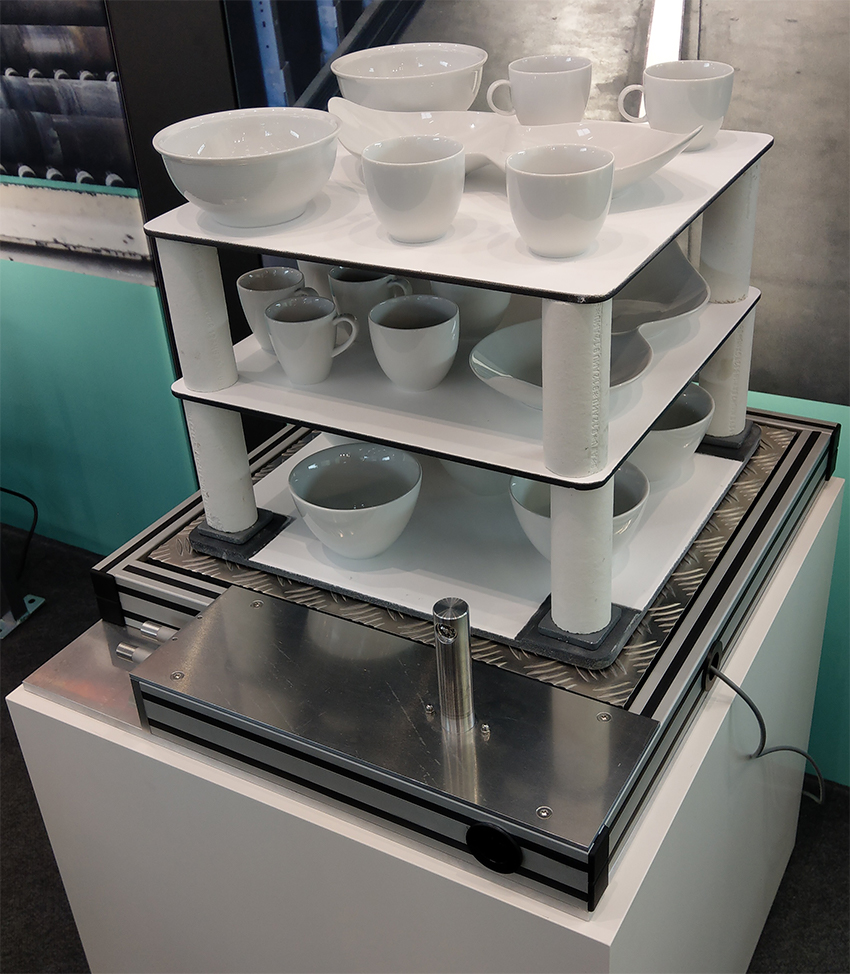Drying is usually necessary after shaping, before the green bodies can be debinded in the furnace. The moisture content must be reduced from initial values between 10 and 50 vol.-% to about 1 vol.-%. Higher moisture contents would cause rapid heating of the green bodies during debinding, leading to boiling of the liquid component and damage to the green bodies. Shaping processes that usually require drying are slip casting, tape casting, wet pressing, and plastic shaping processes such as extrusion. Organic solvents such as alcohols as well as increasingly water are used as liquids.
Even with slower drying, incorrect process management could lead to mechanical or thermal stresses, which can cause deformation of the green parts or cracking. Gentle and uniform drying often requires a lot of time, sometimes many weeks, and correspondingly a lot of space. Optimized process parameters are often not known. The aim of drying optimization at Fraunhofer Center HTL is to identify drying parameters that do not cause damage to the green parts, but enable the most cost-effective drying.
 Fraunhofer ISC, Center for High Temperature Materials and Design HTL, Bayreuth
Fraunhofer ISC, Center for High Temperature Materials and Design HTL, Bayreuth
